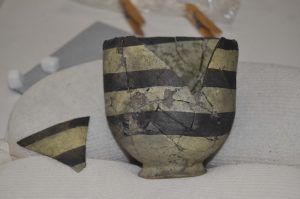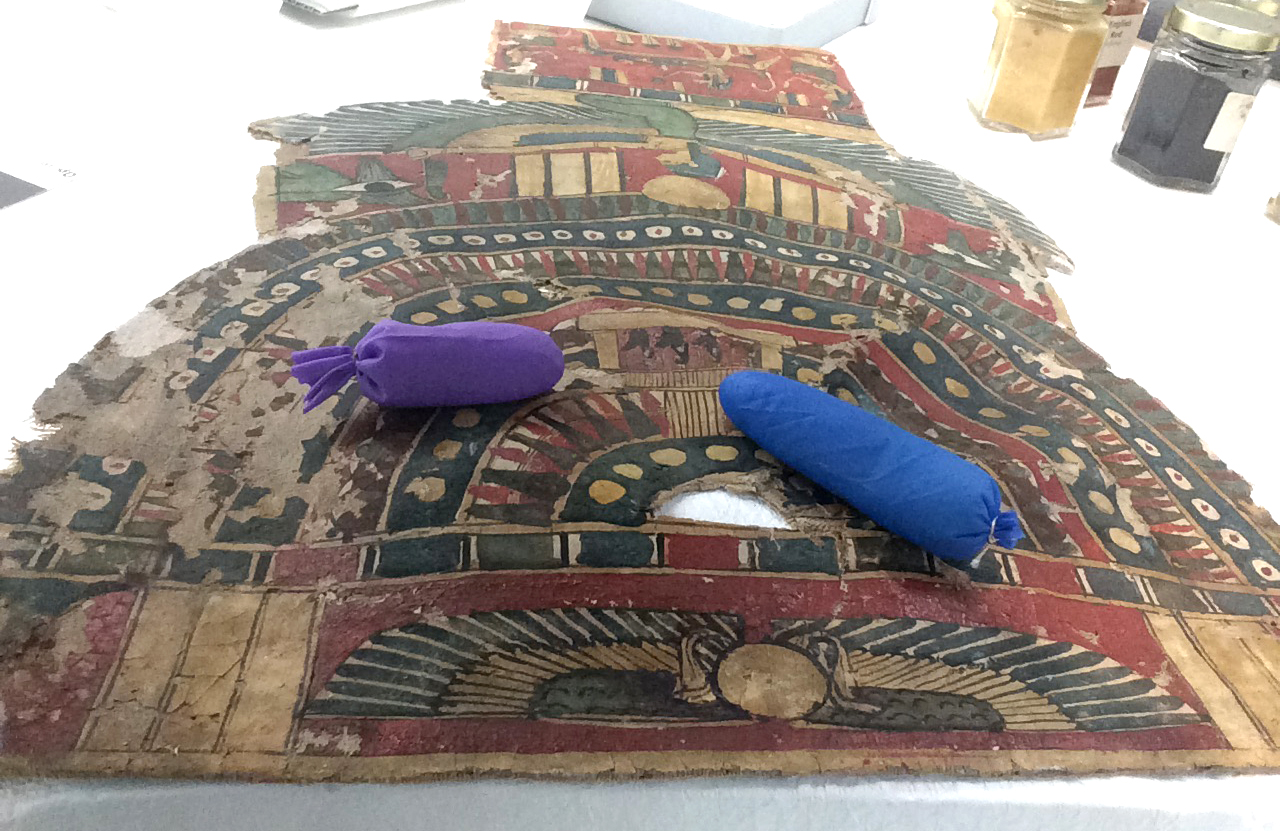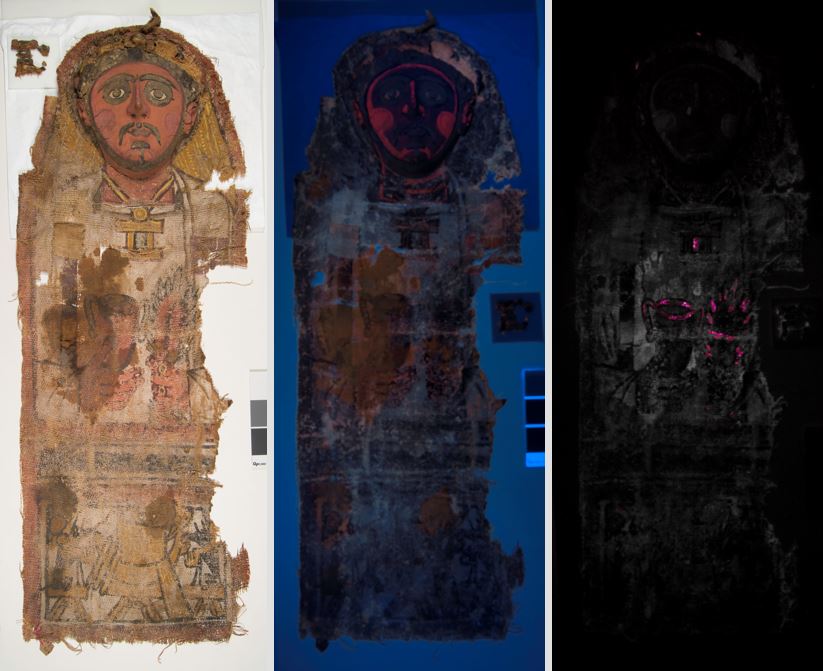I had heard about this material, BJK dough, since graduate school but had never actually seen it on an object until coming to the Penn Museum. Now that I’ve encountered it, I know it when I see it. It’s often found as fills on ceramics in our collection that were treated in the 1970s and 80s. It’s brown, fibrous, and really hard. Sometimes it is painted but in some cases it is left unpainted because its brown, matte appearance worked well for filling archaeological ceramics (and other similarly-colored objects).
I first read about BJK and its predecessor, AJK, in this great JAIC article by Steve Koob, Obsolete Fill Materials Found on Ceramics. AJK was developed in the University College London (UCL) conservation lab in the 1960s, by mixing Alvar (polyvinyl acetal), jute, and kaolin in solvents, to create a putty. In 1980 Alvar was discontinued so was replaced by Butvar (polyvinyl butyral), to make BJK dough. Both AJK and BJK were used extensively in conservation labs during these decades to fill ceramics and for other gap-filling on objects. Some fills were made by creating a lattice-support with narrow strips. This terrific blogpost goes into detail about AJK and BJK and includes a recipe for making strips of dough for filling archaeological ceramics. This recipe is interesting for understanding the old treatment materials and methods, but just to be clear, is NOT recommended for conservation treatment any longer. We use materials that are now known to have better long-term aging properties, such as Paraloid B-72 bulked with glass microballoons.
Here are some examples of BJK dough that we’ve found on objects that are currently in the Artifact Lab:

31-17-318, painted ceramic vessel from Ur, before treatment (left) with painted BJK fills, and during treatment (right) with BJK fills removed. One of the removed BJK fills is pictured in the center.

73-5-557, Detail of iron sword from Hasanlu (Iran) with BJK fills (before treatment)

E8436, cup from Karanog, Nubia, Meroitic Period (ca. 100 BCE-300 CE) with large painted BJK fill. The black arrow points to a new crack that developed in the ceramic due to shrinkage of the BJK fill post-treatment.
Due to damage that we have observed on objects with BJK fills (see image above), and to prevent damage from occurring in the future, we often remove BJK when we find it on objects being treated in the lab. Fortunately, the BJK can be removed by poulticing with acetone, which causes it to become flexible and gummy enough to be scraped or gently pried away from the original object.
I think I can safely say that all of us in our department have done our fair share of picking off BJK from objects. Spending time undoing old treatments allows us to reflect on these past treatment choices and on our own decisions. We are very fortunate today to be able to learn from past treatments, to have decades of research and published observations to rely on for our own decision-making, and to have the technologies to allow us to better track condition of objects and materials over time.
As it is, this is a good time of year for reflection, but also to look forward to a new year ahead, and the certainty of new challenges and discoveries to be made. There will be no public access to the Artifact Lab from December 31 until April 8, but we will continue to update the blog as we work in the lab on new projects. Stay tuned, and Happy New Year, from all of us in the Conservation Department!






























